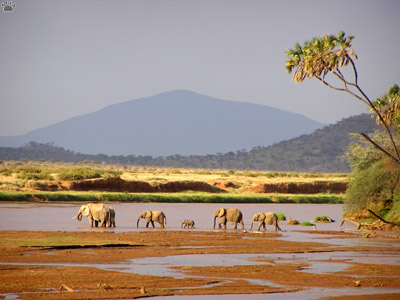 Quiet evening at Samburu River, Buffalo Springs National Reserve, Kenya.
Swimming in rainforest rivers - Part 3 |
| Some of the world's best places for freshwater swimming and diving are in Africa. Like in South America, anyone admitting to have such plans will be told countless horror stories about crocodiles and parasitic worms. There is a chance of encountering them, of course, but the fun is worth the risk. |
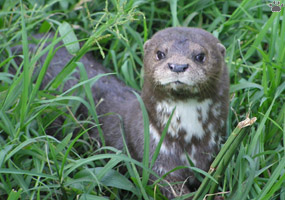 Spot-necked otter (Lutra maculicollis), Lake Victoria near Entebbe, Uganda. |
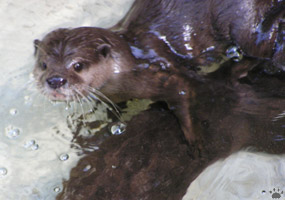 Cape clawless otter (Aonyx capensis), Sweetwater Game Sanctuary, Kenya. |
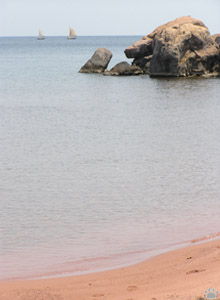 Lake Tanganyika south from Kigoma, Tanzania. |
The Great Lakes of Africa, especially Tanganyika and Malawi, are the most diverse freshwater ecosystems of our planet. Snorkeling at Tanganyika is as good as at any coral reef: 50-70 m visibility, wall dropoffs, plus you can see more than 100 species of very colorful fishes in one day. | 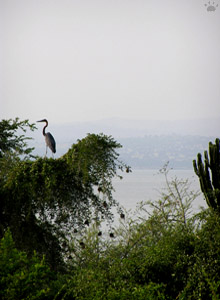 Goliath heron (Ardea goliath) at Lake Albert, Uganda. |
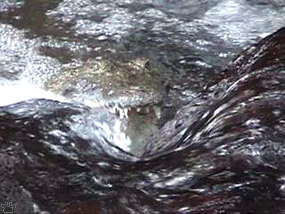 Nile crocodile (Crocodilus niloticus) waiting for fish in swift current. Tsavo West National Park, Kenya. |
 Nile crocodiles of Madagascar are slightly smaller, but they also kill people occasionally. D'Ankarafantsika National Park, Madagascar. |
 Hippo (Hippopotamus amphibius) underwater, Tsavo West, Kenya . |
It is important to wear mask at all times: if a crocodile tries to approach you, dive towards it, and it will turn away. Hippos are more dangerous (they kill more people in Africa every year than any other large animal), so keep your distance, especially from old males and females with small babies. | 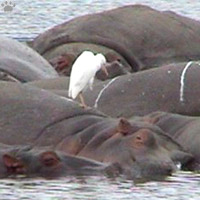 Hippos and cattle egret (Bubulcus ibis), Ngorongoro Crater, Tanzania. |
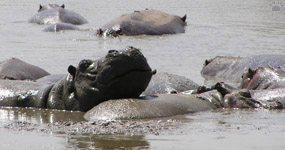 Big, mean male hippo. Queen Elizabeth National Park, Uganda. |
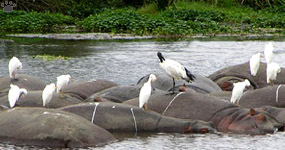 Hippos, egrets and sacred ibis (Threskiornis aethiopicus), Ngorongoro. |
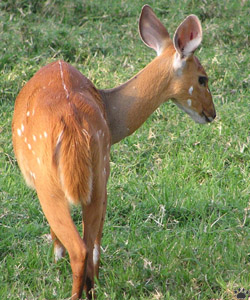 Bushbuck (Tragelaphus scriptus), Tana River, Kenya. |
African rivers and lakes provide easy and quiet access to endless variety of wildlife on their shores, from frogs to elephants. |  Vervet monkey (Cercopithecus aethiops), Tana River, Kenya. |
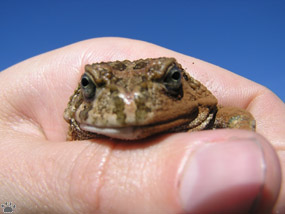 Pyxicephalus edulis frog, Nairobi National Park, Kenya. |
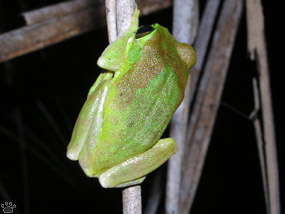 Leptopelis frog, Semiliki Valley National Park, Uganda. |
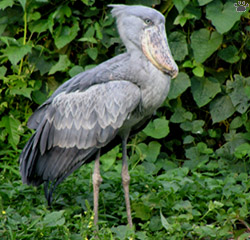 Shoebill (Balaeniceps rex), Murchison Falls National Park, Uganda. |
Some bird species, such as shoebill, are very difficult to find from shore, and too shy to see well from a boat, so you have to swim up to them. | 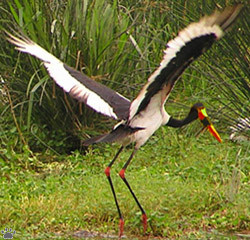 Saddlebill (Ephippiorhynchus senegalensis), Serengeti National Park, Tanzania. |
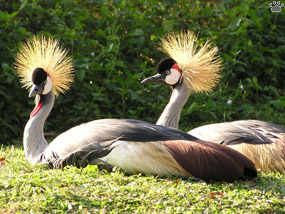 Grey-necked crowned cranes (Balearica regulorum), Saiwa Swamp National Park, Kenya. |
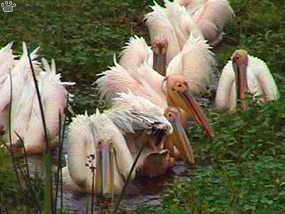 Great white pelicans (Pelecanus onocrotalus), Masai Mara National Reserve, Kenya. |
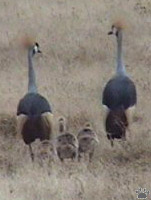 Grey-necked crowned cranes with chicks, Serengeti. |
When birdwatching from water, try not to swim near reedbeds or papyrus thickets, unless it's really necessary or you have a wetsuit. In such places there is certain risk of being infected by bilhartzia, especially if the current is slow or absent. Fortunately, the best places for diving - lakes Tanganyika, Malawi and Kivu - are bilhatzia-free, except for a few shallow areas. Soda lakes are also safe, so you can swim to those giant flamingo flocks as long as you don't mind the salinity. |  Yellow-billed storks (Mycteria ibis), Ngorongoro. |
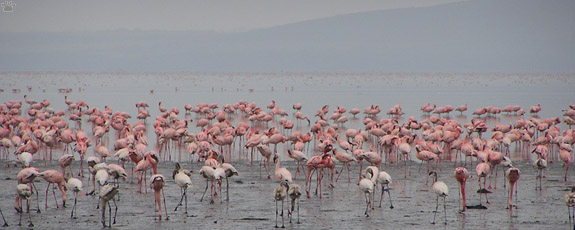 Lesser flamingos (Phoenicopterus minor), Lake Natron, Tanzania. |
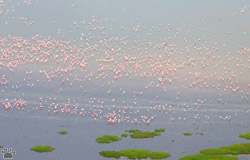 Lesser flamingos, Lake Nakuru National Park, Kenya. |
Put some stones in your pockets, so that you won't float too high in the saline water. | 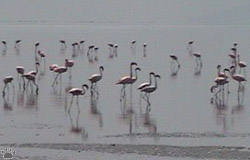 Greater flamingos (Ph. roseus), Lake Natron. |
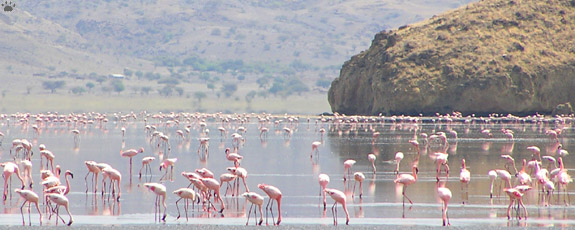 Lesser flamingos, Lake Natron. |
 Rock pratincole (Glareola nuchalis), Source Of The Nile Rapids, Uganda. |
The Nile is one of Africa's most interesting rivers. Parts of it are fast enough for whitewater rafting, in other places it slowly makes its way through endless papyrus swamps. In Murchison Falls National Park you can see both "faces" of the river at the same location. Look for rare shoebills, rock pratincoles, and papyrus gonoleks there. | 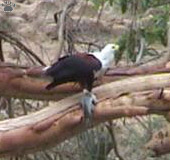 African fish-eagle (Haliaeetus vocifer), Murchison Falls. |
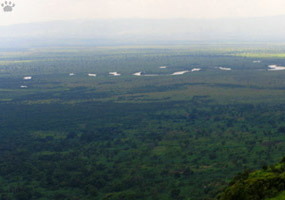 Semiliki River on the border of DR Congo and Uganda is the easternmost of .slow lowland rivers typical for West Africa. |
 Whitewater rafting at Source Of The Nile Rapids near Lake Victoria, Uganda. |
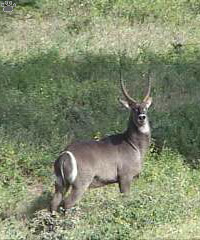 Waterbuck (Kobus ellipsiprymnus) is one of antelopes often seen from water. Tsavo East National Park, Kenya. |
Don't forget to put a thick layer of insect repellent on your skin before going for a swim, especially if there are villages or towns nearby. Malaria is very common in most of Africa and in coastal areas of Madagascar - Anopheles mosquito is by far the most dangerous creature you'll ever encounter. Don't play with large catfishes and giant Belostoma water bugs - they bite! |  Kob (K. kob) is sometimes common in wet savannas and floodplains, especially where impala antelope is absent. Murchison Falls. |
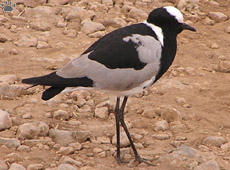 Blacksmith plover (Vanellus armatus), Serengeti. |
 Chestnut-banded plovers, Lake Natron. |
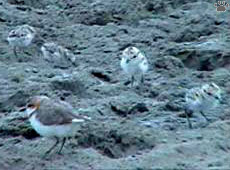 Chestnut-banded plovers (Charadrius pallidus) with chicks, Ngorongoro. |
 A perfect river for swimming, Masoala Nat'l Park, Madagascar. |
One more thing to keep in mind: whatever happens to you in those lakes and rivers, it's not my fault. |  Spotted hyena (Crocuta crocuta), Lake Baringo, Kenya. |
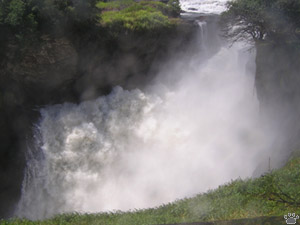
Murchison Falls, Uganda.